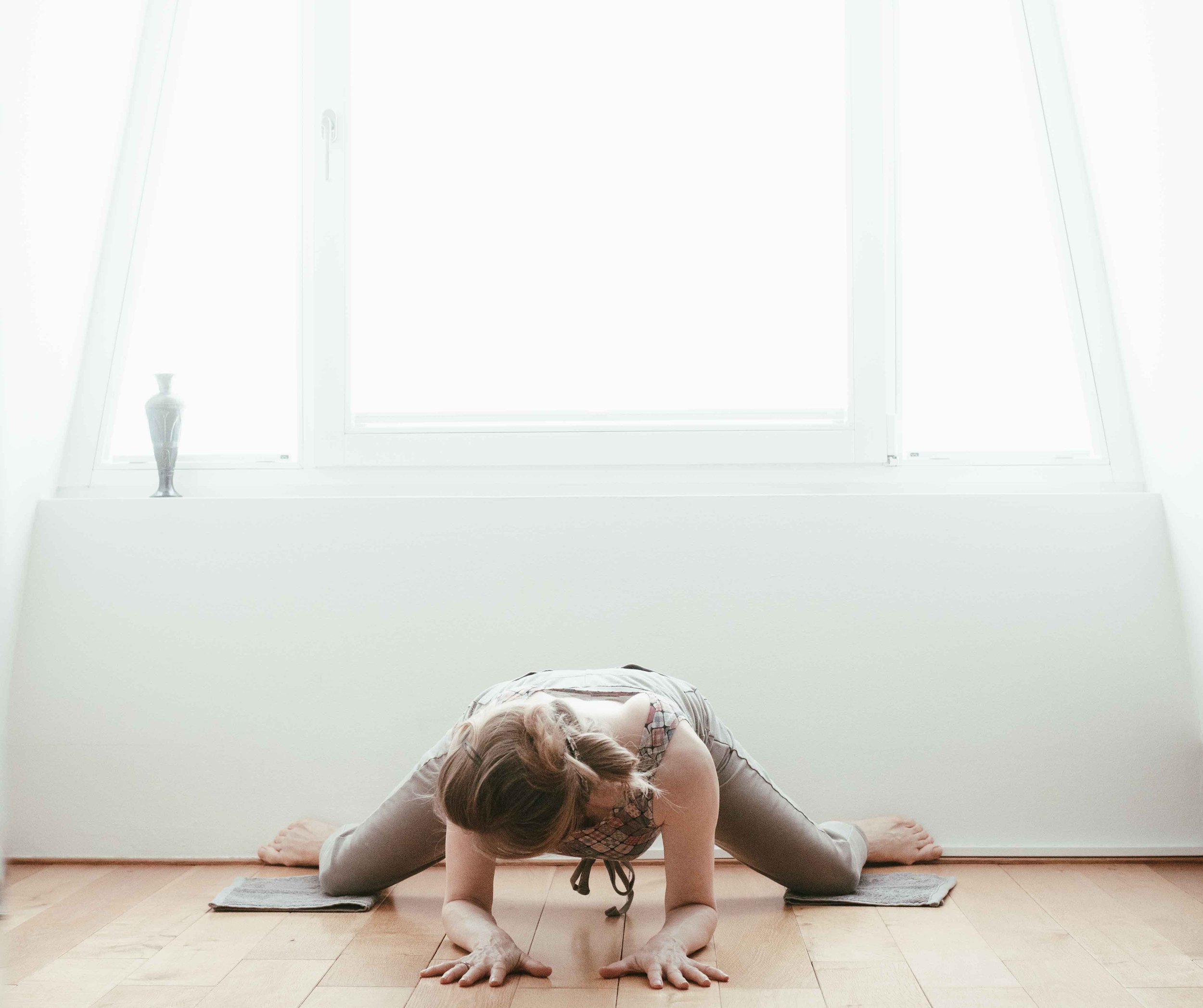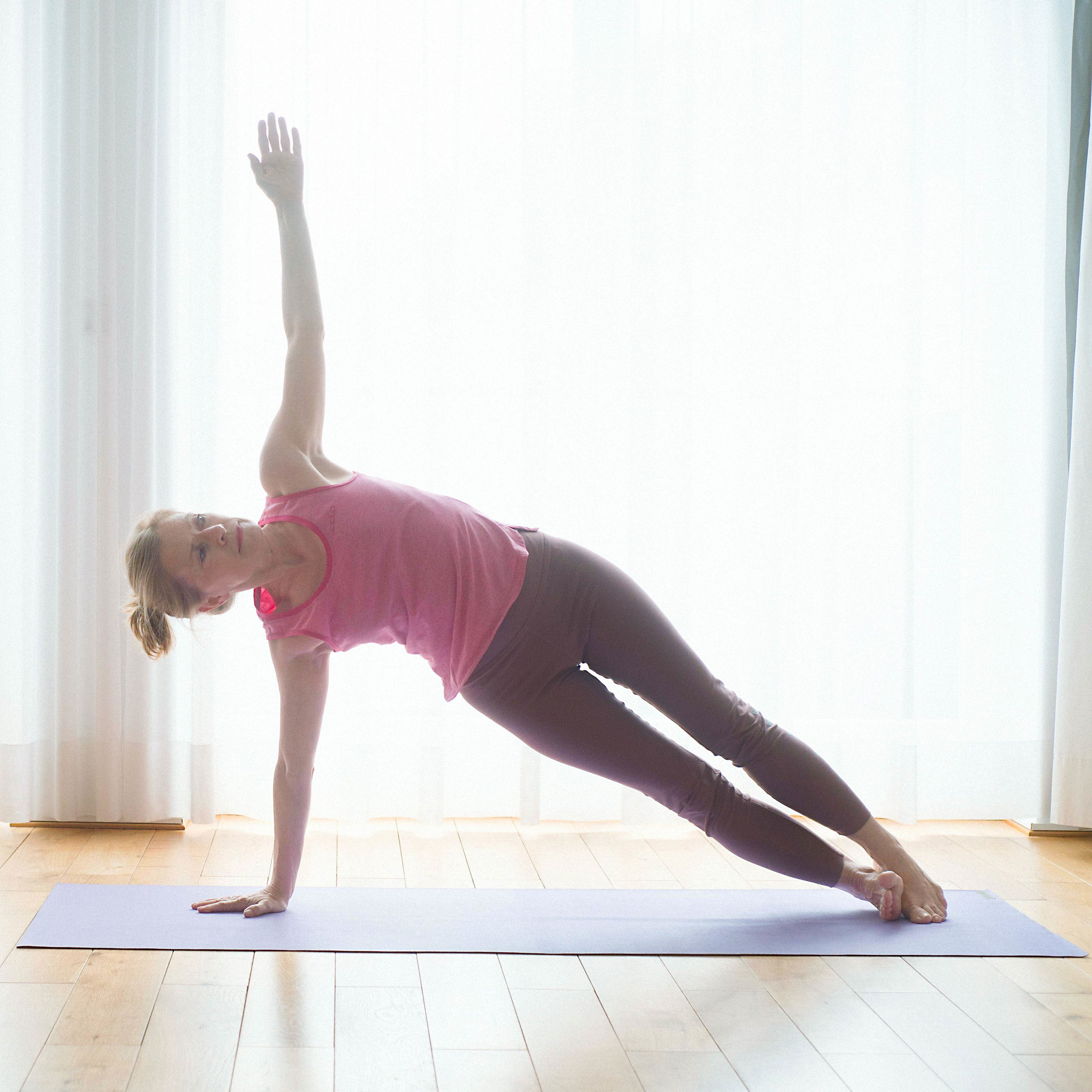Side split exercise, May 2023
The exercise in the picture is a little easier than the splits with legs outstretched. I usually practice the position without pressing the feet against the wall. But this variation gives more stability. It's also easier to get deeper into the position because you can move your feet to the side against the wall. The knees can then follow. That is as far as the body will allow.
The legs press down or to the center of the body. The muscle that is tensed is called the adductor. This is probably not used very often by most people. Now I train this muscle additionally in a strength studio. There are machines that train exactly this adductor.
As a supplement to yoga, I signed up at a body building studio. You can attend classes there, do cardio training, but also do strength exercises on machines. At my age (over 60), strength deteriorates very quickly. Yoga alone is not enough to stay strong.
More strength helps me with almost all yoga postures.
That yoga is enough to stay fit is an illusion. The cardiovascular system is not trained. Yoga does make you stronger. Many postures become easier if you do additional strength training.
Happy weekend.




